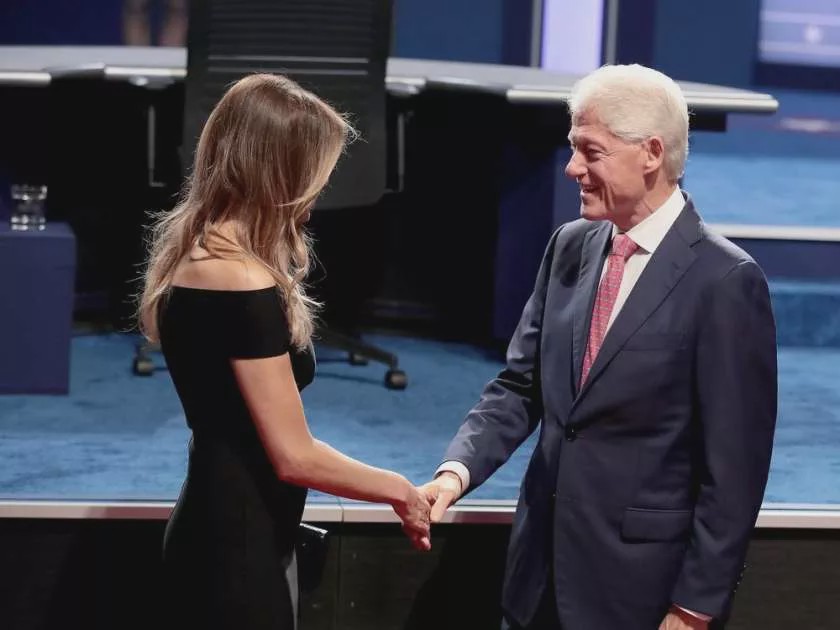The presidential debates confirmed the importance non-verbal communication plays in a presidential election. From Donald Trump’s pursed lips to Hillary Clinton’s high chin; there’s often a big disconnect between what’s verbally said and what’s communicated with the body. It’s a disconnect with consequences, as any presenter in the heat of the public eye well knows. Here’s one of my new’s appearances during the debates, where I discuss congruent vs. incongruent body language.
A beautifully crafted, oh-so-sincere speech, can easily be deemed phony and lacking in confidence when delivered through the guise of a slouch, a little unconscious eye darting or a lack of feeling.
As a communications consultant, watching the Democratic and Republican National Conventions as well as the presidential and vice presidential debates are “Super Bowl” time for my career. I couldn’t help but notice Melania Trump’s body language as she walked onto the stage at the very start of the first presidential debate: beautiful as that former supermodel is, her shoulders were slouched forward, she was taking up very little space and communicated a spiritless, tame meekness. Her non-verbal communication spoke volumes about her self-confidence and current state of enjoyment — -or lack thereof.
Because our non-verbal communications make up 90% of the information people glean from us, social psychologists are on the case with advice on how to consciously use our physicality for confident and clear, trust-inducing communication.
In 2010, Harvard Business School professor, Amy Cuddy along with colleagues, Dana Carney and Andy Yap, published a paper claiming “high-power poses” (think Wonder Woman’s posture) versus “low-power poses” (Hello, Homer Simpson) affect not only the way others perceive us but our body chemistry as well. That’s to say, when you take up space, open up, assume positions of fearlessness, celebration, and victory, your testosterone (dominance hormone) increases while your cortisol (stress hormone) plummets. In general, powerful leaders, whether female or male, have higher than normal testosterone levels and lower than normal cortisol levels. Any one of us can change our hormonal makeup to match that of a powerful leader simply by assuming postures that have more in common with Wonder Woman than with Homer Simpson.

Powerful stuff, right? And there’s more; smiling increases enjoyment in those you’re relating with (Strack, Martin, Stepper, 1988), head titling induces pride (Stepper & Strack, 1993) and touch, say a light tap on the arm or shoulder, can increase the likelihood that people will do as you request (Briñol & Petty, 2003; Chen & Bargh, 1999; Wegner, Lane, & Dimitri, 1994). But here’s the deal: there’s a fine line between smiling simply because research tells you to vs. smiling because you genuinely feel like smiling. This is why daily practice spent assuming a “power pose” is important. Change your biochemistry first — authentic expressions of happiness and confidence will naturally follow.
So, leaders and emerging leaders, let’s see you, in the immortal words of Madonna — strike a pose. Do it now. Raise your arms into a V above your head, widen your stance, and let your face adopt an expression congruent with this new posture. Hold it for two minutes. And, SHAZAM — watch as your confidence rises and your people respond to you in new ways. Worth the experiment, right? Oh, and if you’re feeling really adventurous, put on a genuine cape and latex onesie and go to a Comic Convention where you can BE your favorite superhero for an entire day. You become what you relate to.

Originally published at medium.com


